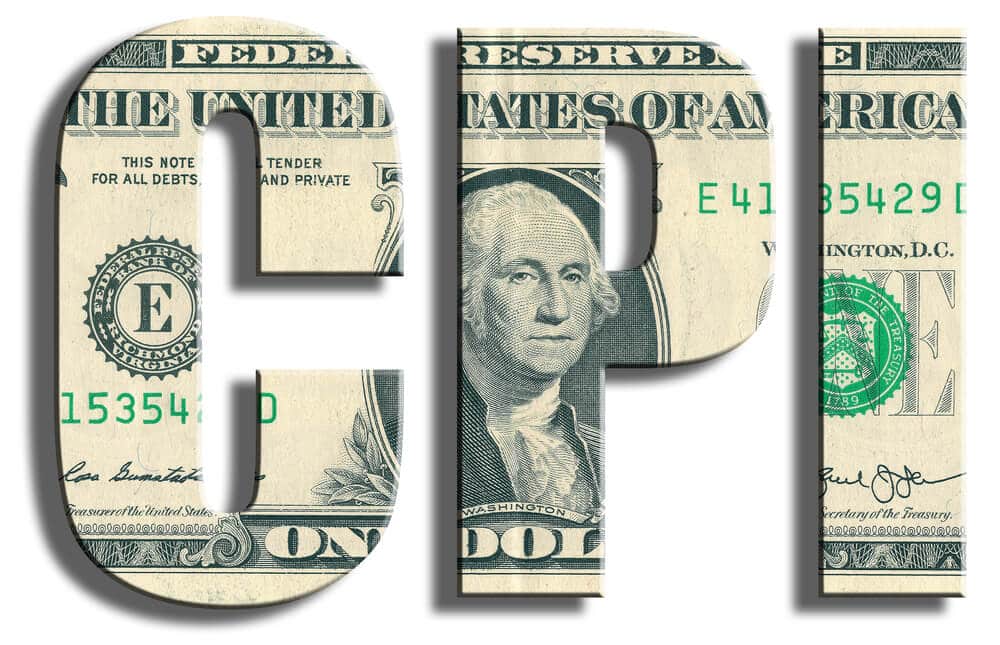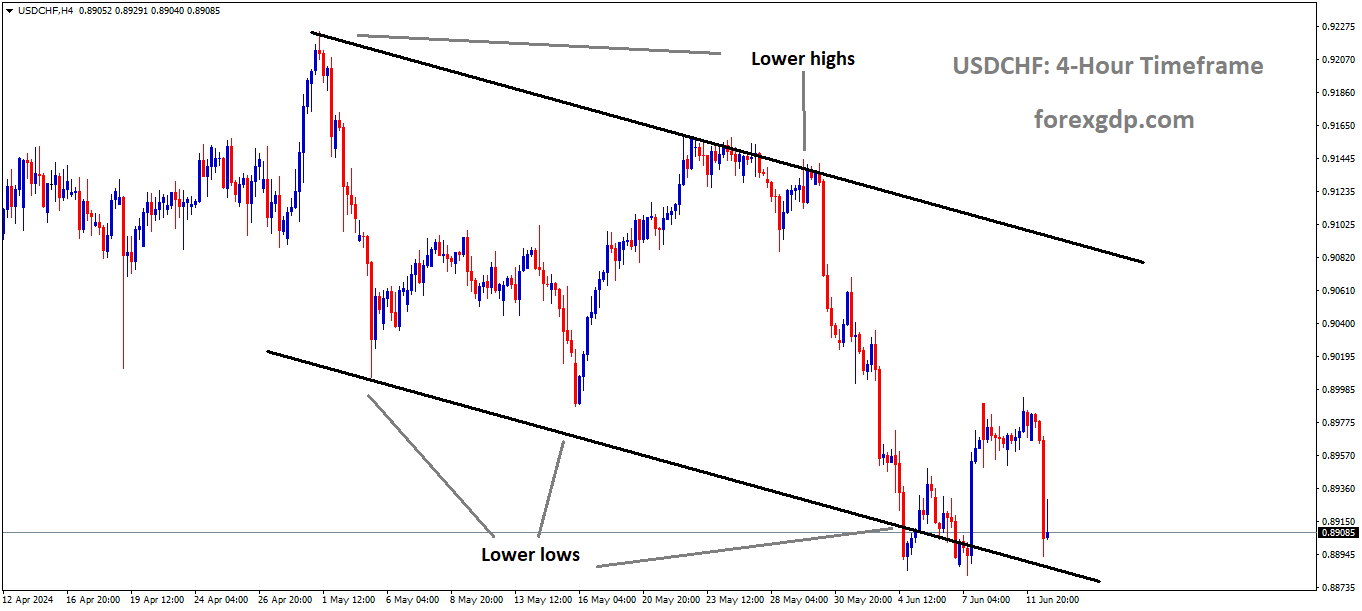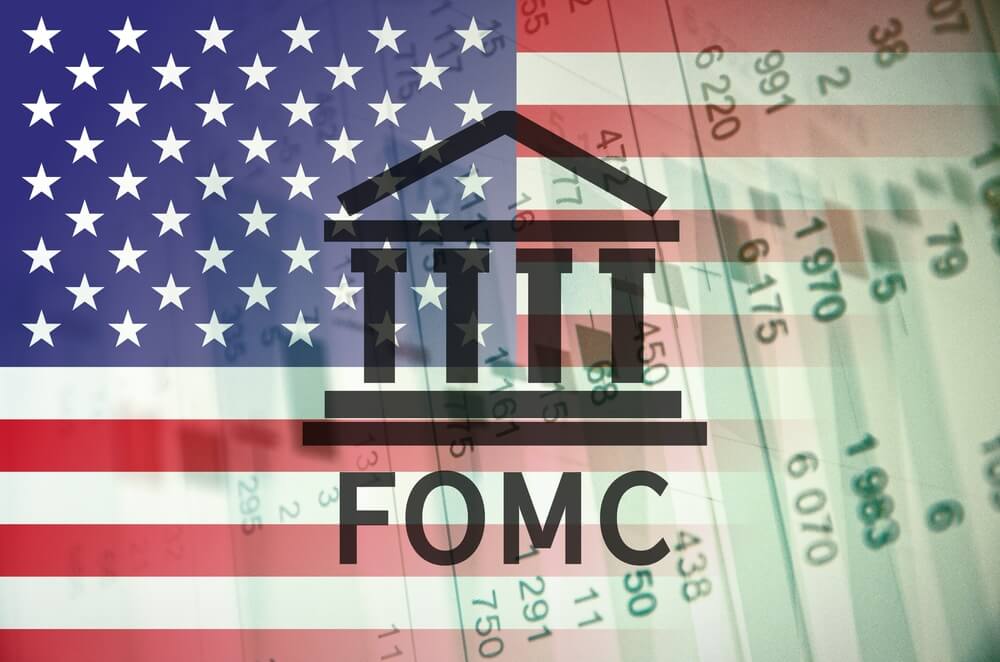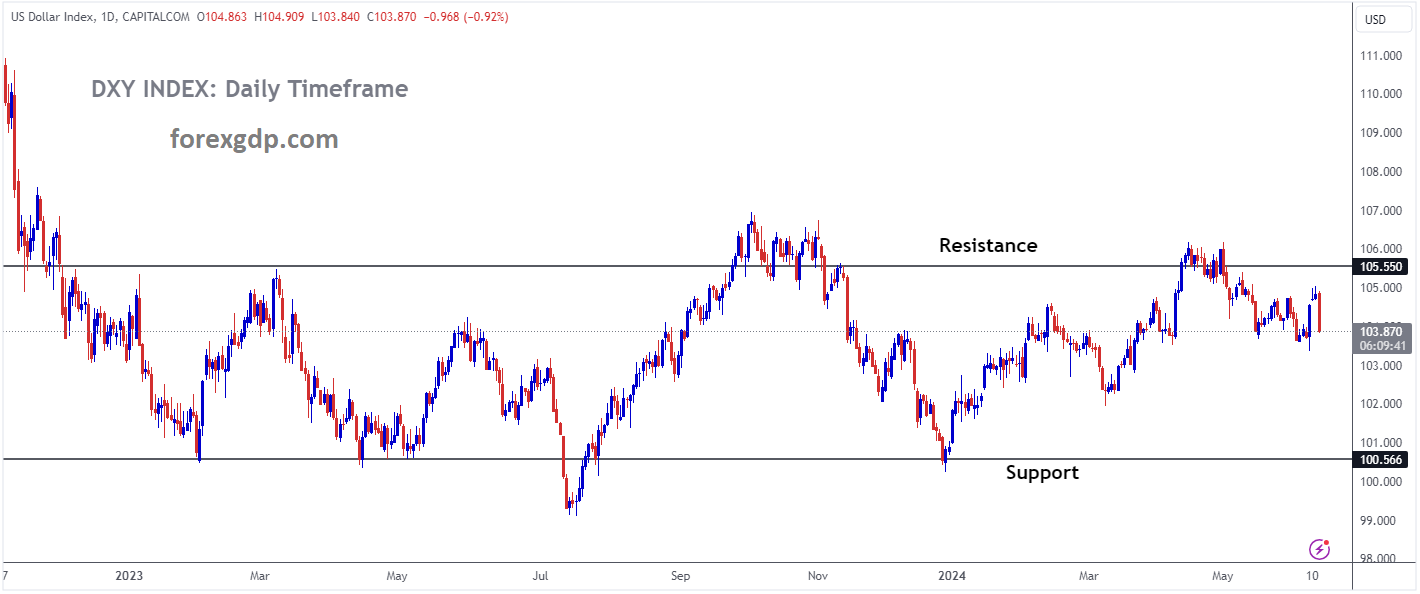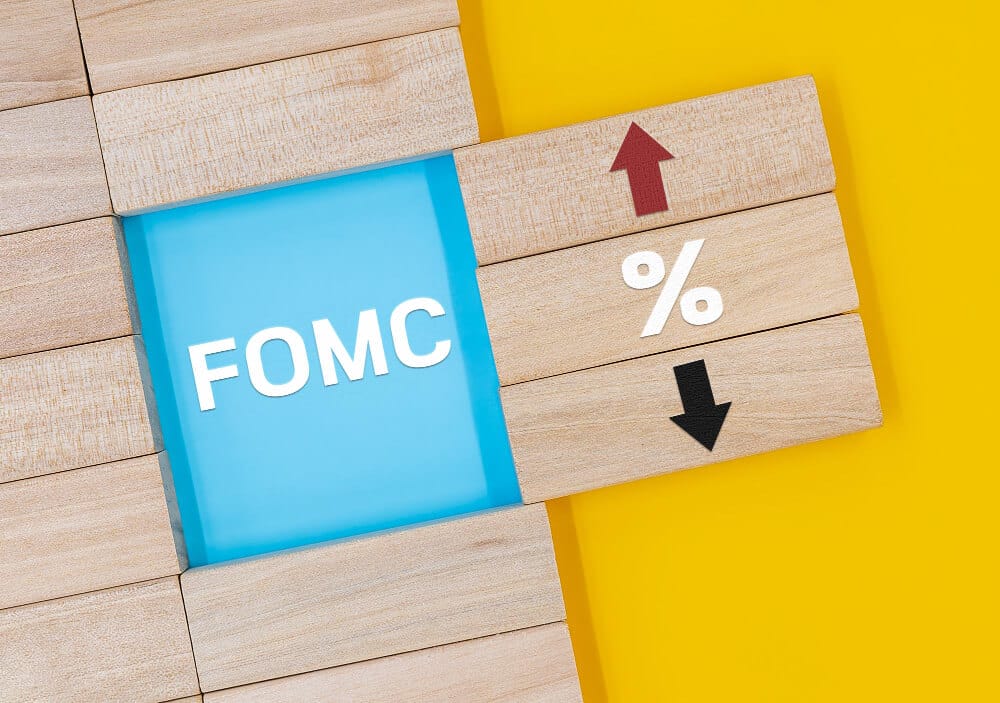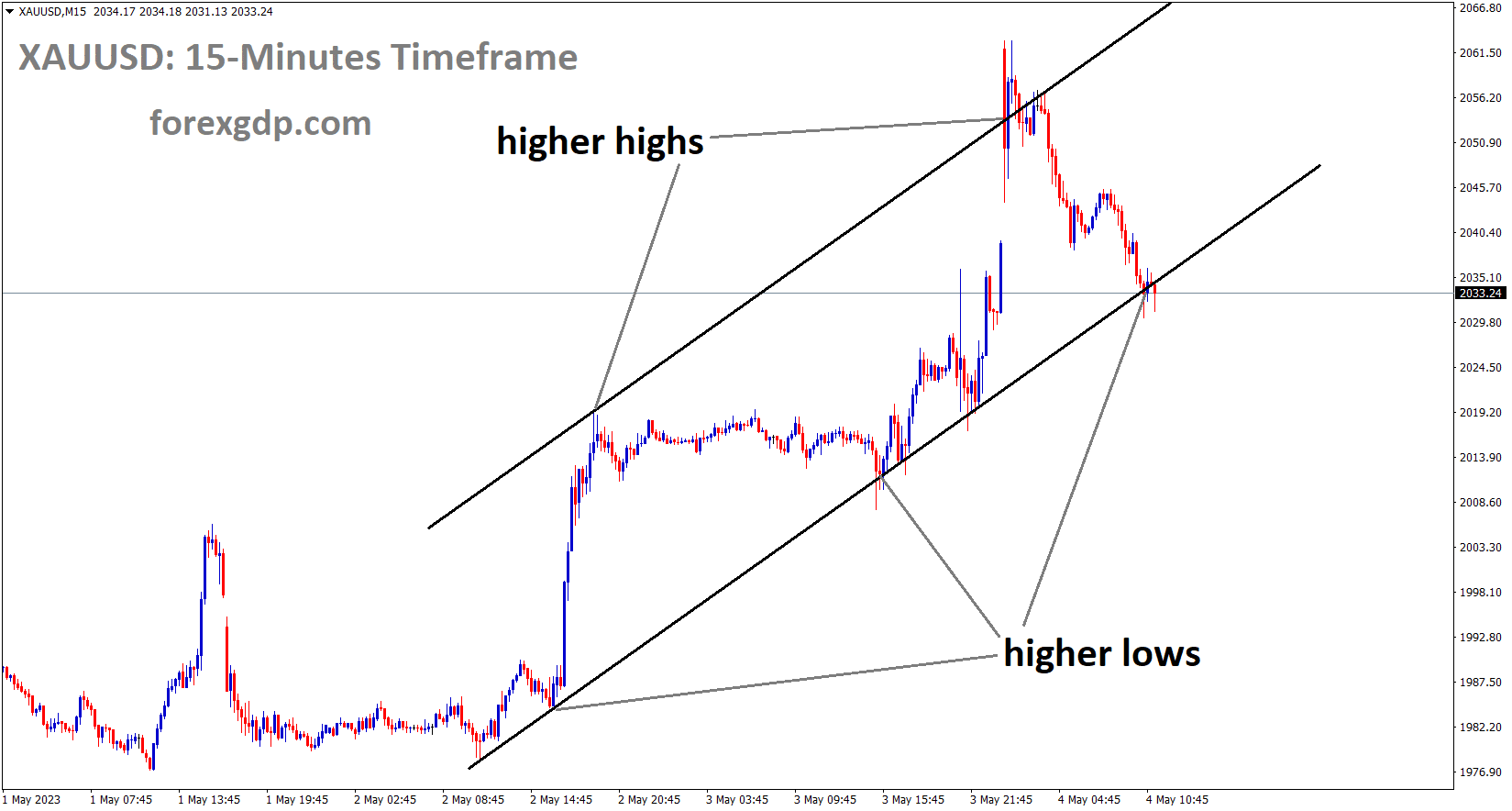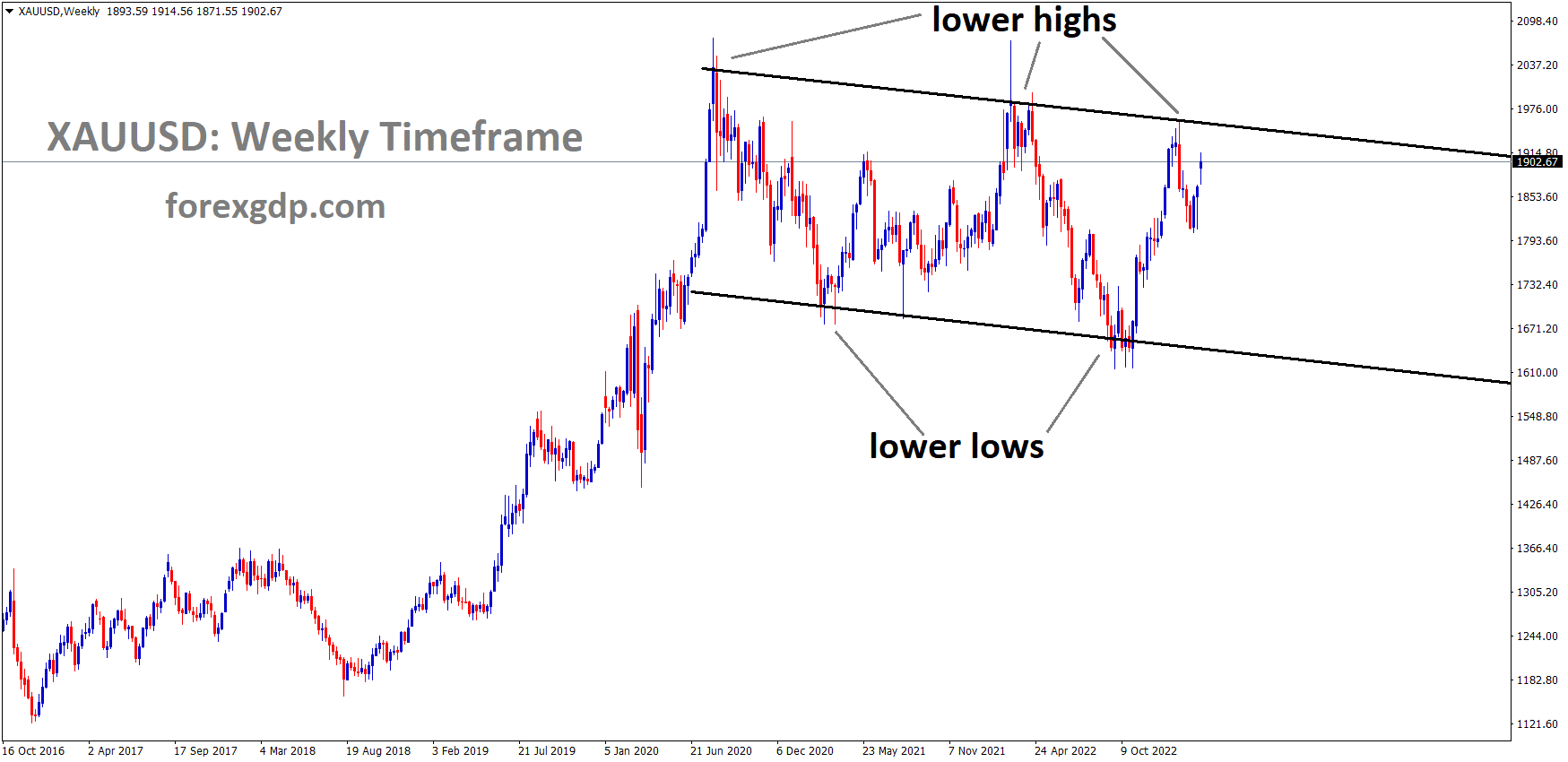USD: US Consumer Prices Unchanged in May as Inflation Pressures Ease
US CPI data came at lower than expected today makes US Dollar plunged down against counter pairs. US Core CPI data came at 3.4% in the May month versus 3.6% in the April month, Headline CPI came at 3.3% in the May month versus 3.4% in the April month. So CPI declining is progress in the US economy makes confidence of Rate cuts from FED in the September and December month meeting.
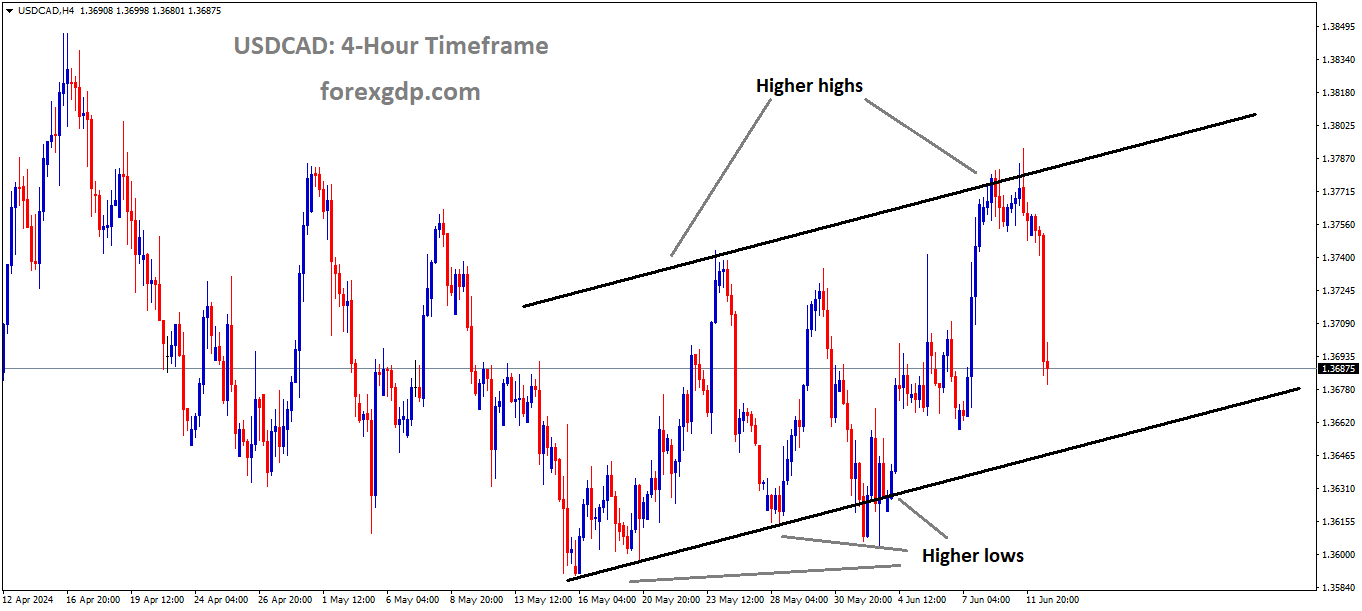
USDCAD is moving in Ascending channel and market has fallen from the resistance area of the pattern
U.S. Consumer Prices Steady in May
In May, U.S. consumer prices showed no change, surprising analysts who had anticipated a slight increase. Despite rising costs for rental housing, lower gasoline prices offset the overall inflationary pressures. This muted inflationary environment suggests that the Federal Reserve may delay any interest rate cuts until September, given the prevailing strength of the labor market.
The Bureau of Labor Statistics reported that the consumer price index (CPI) remained unchanged last month, following a 0.3% increase in April. This marks the softest reading since July 2022, indicating a downward trend in CPI since its peak in February and March. Economists, polled by Reuters, had forecasted a modest 0.1% increase in May, highlighting the unexpected nature of the data.
Factors Influencing CPI:
Gasoline Prices: After a 2.8% increase in April, gasoline prices fell by 3.6% in May.
Food Prices: Food prices saw a marginal 0.1% increase, with supermarket prices remaining unchanged.
Rental Costs: The cost of rent increased by 0.4%, consistent with the rise observed in April.
Long-term Trends:
Annual CPI Growth: Over the 12 months ending in May, the CPI advanced by 3.3%, slightly lower than the 3.4% increase in April.
Inflationary Pressure: While the annual increase in consumer prices has moderated from its peak in June 2022, it remains above the Fed’s 2% target.
Market Response and Future Outlook:
Following the CPI data release, short-term interest rate futures implied a higher probability of a rate cut by September, with traders also betting on a second cut by December. However, some economists remain uncertain about the timing of the Fed’s easing cycle, with opinions split between a rate cut in September or December.
Sector-specific Analysis:
Healthcare: Healthcare costs rose by 0.5%, with prescription medication prices seeing a notable 2.1% jump.
Transportation: Prices for used cars and trucks rebounded by 0.6%, while airline fares dropped by 3.6%.
In summary, the latest CPI data underscores a mixed economic landscape, prompting varied market responses and raising questions about the timing and extent of future monetary policy actions by the Federal Reserve.
USD: Inflation Slows in May: Consumer Prices Up 3.3% from Last Year
US CPI Data and Its Implications
The latest Consumer Price Index (CPI) data from the United States has come in lower than expected, causing the US Dollar to plummet against other major currencies. This development suggests a deceleration in inflation, bolstering expectations of potential rate cuts by the Federal Reserve (Fed) in the coming months.
USDCHF is moving in Descending channel and market has reached lower low area of the channel
Key Data Points:
Core CPI: Dropped to 3.4% in May, down from 3.6% in April.
Headline CPI: Declined to 3.3% in May, compared to 3.4% in April.
Analytical Insights:
Core CPI: The reduction to 3.4% signifies a notable easing of inflationary pressures, particularly when volatile food and energy prices are excluded.
Headline CPI: The slight decrease to 3.3% further reinforces the narrative of moderating inflation across the broader economy.
The lower-than-expected CPI data precipitated a sharp decline in the US Dollar’s value as investors reassess the trajectory of monetary policy.
Implications for Federal Reserve Policy:
Rate Cut Expectations: The decelerating inflationary trend strengthens the case for the Fed to consider rate cuts. Market sentiment now leans towards possible rate reductions in the September and December Federal Open Market Committee (FOMC) meetings.
Economic Confidence: The declining CPI figures are seen as progress in the Fed’s efforts to control inflation, which may enhance overall economic confidence.
Conclusion:
The latest CPI data underscores a tempering of inflation in the US economy, leading to heightened speculation about potential rate cuts by the Federal Reserve later this year. This development has immediate ramifications for the US Dollar and broader market dynamics, as investors adjust their positions in response to the evolving economic landscape.
The latest report from the Labor Department indicates a stabilization in inflationary pressures in the U.S. economy, with the Consumer Price Index (CPI) showing no increase in May. Here are the key highlights from the report:
The CPI, which measures the average change in prices paid by consumers for goods and services, remained flat on a monthly basis in May. However, on a year-over-year basis, it increased by 3.3%.
Economists had anticipated a slight monthly gain of 0.1% and a 3.4% annual rate, but the actual figures fell short of expectations. In April, the CPI rose by 0.3% on a monthly basis, with an annual rate of 3.3%.
Excluding volatile food and energy prices, the core CPI increased by 0.2% on the month and 3.4% from a year ago, slightly below estimates of 0.3% and 3.5%, respectively.
Despite the overall stability in inflation, shelter inflation, which includes housing-related costs, increased by 0.4% on the month and 5.4% from a year ago, contributing to the CPI’s weight.
Price increases were offset by a decline in the energy index by 2% and a marginal increase of 0.1% in food prices. Gas prices notably dropped by 3.6%, providing some relief for consumers.
However, certain inflation components, such as motor vehicle insurance, still registered significant increases on an annual basis, highlighting persistent inflationary pressures.
The CPI release is particularly significant as the Federal Reserve deliberates its monetary policy decisions. Market expectations for a rate cut in September increased following the report, with futures traders now pricing in a higher probability of such a move.
The Fed’s Federal Open Market Committee (FOMC) is expected to maintain its benchmark interest rate range at 5.25%-5.50% in its upcoming meeting. However, the CPI numbers could influence the committee’s future policy decisions and economic projections.
Fed officials have emphasized the need for sustained positive data before considering policy easing, and any decision will be based on a comprehensive assessment of economic indicators, including the CPI.
While the CPI serves as an important indicator for inflation, the Fed primarily relies on the personal consumption expenditures price index (PCE) for its policy decisions, which provides a broader perspective on consumer spending behavior and inflation trends.
USD: U.S. CPI Remains Flat in May, Surpassing Expectations; Bitcoin Surges to $69.2K
US CPI Data and Its Implications
The latest Consumer Price Index (CPI) data from the United States has come in lower than anticipated, causing the US Dollar to plummet against other major currencies. This development suggests a deceleration in inflation, which bolsters expectations of potential rate cuts by the Federal Reserve (Fed) in the coming months.
USD Index Market price is moving in box pattern and market has fallen from the resistance area of the pattern
Key Data Points:
Core CPI: Dropped to 3.4% in May, down from 3.6% in April.
Headline CPI: Declined to 3.3% in May, compared to 3.4% in April.
Analytical Insights:
Core CPI: The reduction to 3.4% signifies a notable easing of inflationary pressures, particularly when volatile food and energy prices are excluded.
Headline CPI: The slight decrease to 3.3% further reinforces the narrative of moderating inflation across the broader economy.
Market Reactions:
The lower-than-expected CPI data precipitated a sharp decline in the US Dollar’s value as investors reassess the trajectory of monetary policy.
Implications for Federal Reserve Policy:
Rate Cut Expectations: The decelerating inflationary trend strengthens the case for the Fed to consider rate cuts. Market sentiment now leans towards possible rate reductions in the September and December Federal Open Market Committee (FOMC) meetings.
Economic Confidence: The declining CPI figures are seen as progress in the Fed’s efforts to control inflation, which may enhance overall economic confidence.
Conclusion:
The latest CPI data underscores a tempering of inflation in the US economy, leading to heightened speculation about potential rate cuts by the Federal Reserve later this year. This development has immediate ramifications for the US Dollar and broader market dynamics, as investors adjust their positions in response to the evolving economic landscape.
The latest U.S. Consumer Price Index (CPI) data for May surprised economists by holding flat, defying expectations for a 0.1% increase and marking a slight decline from April’s 0.3% rise. On an annual basis, CPI increased by 3.3%, slightly below both analyst forecasts and the previous month’s reading of 3.4%.
Similarly, the core CPI, which excludes volatile food and energy prices, rose by 0.2% in May, surpassing expectations for a 0.3% increase but down from April’s 0.3% growth. Year-over-year, core CPI rose by 3.4%, slightly lower than forecasts for 3.5% and April’s 3.6%.
The soft inflation report was welcomed by Bitcoin (BTC), which saw a nearly 4% increase in its price over the past 24 hours, reaching $69,400. This comes after a period of heightened sensitivity to U.S. economic data, with recent inflation figures dampening hopes for rate cuts and contributing to Bitcoin’s price fluctuations.
Expectations for rate cuts by the Federal Reserve have shifted, with traders initially anticipating multiple cuts in 2024 but now expecting only one or two, with the first likely to occur in September. This adjustment reflects the recent trend of inflation remaining stubbornly above the Fed’s 2% target, delaying expectations for monetary policy easing.
Meanwhile, while the U.S. is holding steady on rates, other central banks globally, such as the European Central Bank and the Bank of Canada, have begun to lower benchmark rates, contributing to the strength of the U.S. dollar index (DXY).
Investors are now eagerly awaiting the release of the Fed’s “dot plot,” which will provide insight into the interest rate projections of Federal Market Open Committee members. This release is expected to impact asset prices as market participants assess the Fed’s stance on monetary policy moving forward.
Don’t trade all the time, trade forex only at the confirmed trade setups
Get more confirmed trade signals at premium or supreme – Click here to get more signals , 2200%, 800% growth in Real Live USD trading account of our users – click here to see , or If you want to get FREE Trial signals, You can Join FREE Signals Now!


